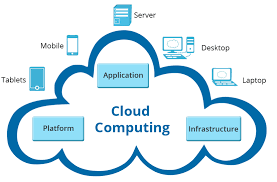The cloud infrastructure landscape is experiencing a transformative shift, driven by the burgeoning demand for AI capabilities. Service providers are increasingly prioritizing servers designed for AI model training, often at the expense of their traditional server upgrade cycles. This strategic pivot is reflected in the soaring capital expenditure (capex) on cloud datacenter infrastructure, which is projected to surge by 30 percent this year.
Unprecedented Capex Growth
According to Vlad Galabov, head of Cloud and Datacenter Research at Omdia, the current estimates might still be conservative. “Some cloud service providers have indicated that they might be raising their capex above what they forecasted before,” Galabov stated. “Capex was already up by about a third, so to increase it further is truly unprecedented.” Omdia’s latest figures reveal that AI servers will account for a staggering 66 percent of overall server capex this year, underscoring the scale of this investment shift.
Diverse Investment Landscape
While the big three cloud providers—AWS, Azure, and Google Cloud—are major players in this investment boom, a broader array of companies is also making significant strides. This includes the top 10 cloud service providers and a growing number of specialized AI cloud service providers like CoreWeave. These investments highlight the diverse and competitive landscape of AI-driven cloud infrastructure.
Costly AI Hardware
Despite the heavy investment in AI-capable hardware, such systems constitute only 19 percent of server shipments. This disparity indicates the high cost of AI servers, which are typically equipped with GPUs, making them more expensive than traditional servers.
Impact on Traditional Server Refresh Cycles
One pertinent question is whether the focus on AI systems is affecting the cloud providers’ ability to refresh their existing server fleets. The situation is nuanced, particularly for large cloud operators who have already invested in custom silicon to enhance platform efficiency. For instance, Google has significantly optimized its infrastructure by developing custom processors like the Video Encoding Unit (VCU). This approach has allowed Google to replace several traditional servers with a single, highly optimized system, resulting in substantial cost savings.
Trend Towards Infrastructure Optimization
Galabov anticipates that this trend of optimizing server infrastructure will continue. Companies like Meta are following similar strategies, and it’s expected that database and networking applications will also undergo similar optimization cycles. Hardware accelerators, such as those from Pliops, are already boosting performance for key-value stores, which underpin many databases.
Cloud Repatriation and Cost Management
Interestingly, some enterprises are reconsidering their reliance on public cloud resources, a trend known as cloud repatriation. Companies have discovered that public cloud costs can rival or exceed those of maintaining their own IT infrastructure, often due to poor resource management. As a result, there’s an increasing focus on “right-sizing” workloads, or placing them where they make the most sense, a strategy Omdia refers to as being “cloud smart.”
IT-as-a-Service Platforms
In the near future, Galabov predicts that enterprises will lean more towards IT-as-a-service platforms like Dell Apex and HPE Greenlake. These platforms offer the benefits of public cloud services within an enterprise’s own datacenter or colocation site, providing pre-configured infrastructure and management options with pay-as-you-go financing.
Sustained Cloud Investment
Despite these shifts, enterprise spending on cloud infrastructure services remains robust, increasing by 21 percent to over $76 billion in the first quarter of this year. The big three cloud operators continue to dominate, capturing 72 percent of this spending. However, second-tier cloud players like Snowflake, MongoDB, and Oracle are showing the strongest year-on-year growth rates.
Future Outlook
The rise of specialized AI providers and the ongoing antitrust scrutiny of major cloud operators may gradually erode the dominance of the big three, fostering a more competitive market. Nevertheless, the cloud is here to stay, continuously evolving to meet the growing demands of AI and other advanced technologies.
The current AI-driven boom in cloud infrastructure not only reshapes provider priorities but also sets the stage for a future where optimized, efficient, and smart cloud strategies will be the norm.





